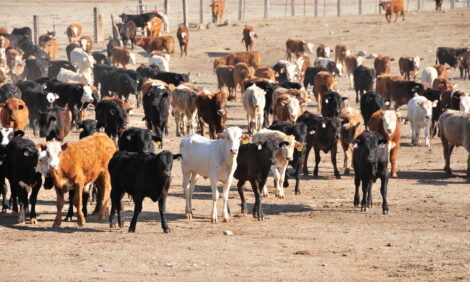



Humans' beef with livestock: a warmer planet
US - It's not just the well-known and frequently joked-about flatulence and manure of grass-chewing cattle that's the problem, according to a recent report by the Food and Agriculture Organization of the United Nations (FAO).Land-use changes, especially deforestation to expand pastures and to create arable land for feed crops, is a big part. So is the use of energy to produce fertilizers, to run the slaughterhouses and meat-processing plants, and to pump water.
"Livestock are one of the most significant contributors to today's most serious environmental problems," Henning Steinfeld, senior author of the report, said when the FAO findings were released in November.
Livestock are responsible for 18 percent of greenhouse-gas emissions as measured in carbon dioxide equivalent, reports the FAO. This includes 9 percent of all CO2 emissions, 37 percent of methane, and 65 percent of nitrous oxide. Altogether, that's more than the emissions caused by transportation.
The latter two gases are particularly troubling – even though they represent far smaller concentrations in atmosphere than CO2, which remains the main global warming culprit. But methane has 23 times the global warming potential (GWP) of CO2 and nitrous oxide has 296 times the warming potential of carbon dioxide.
Methane could become a greater problem if the permafrost in northern latitudes thaws with increasing temperatures, releasing the gas now trapped below decaying vegetation. What's more certain is that emissions of these gases can spike as humans consume more livestock products.
As prosperity increased around the world in recent decades, the number of people eating meat (and the amount one eats every year) has risen steadily. Between 1970 and 2002, annual per capita meat consumption in developing countries rose from 11 kilograms (24 lbs.) to 29 kilograms (64 lbs.), according to the FAO. (In developed countries, the comparable figures were 65 kilos and 80 kilos.) As population increased, total meat consumption in the developing world grew nearly five-fold over that period.
Beyond that, annual global meat production is projected to more than double from 229 million tons at the beginning of the decade to 465 million tons in 2050. This makes livestock the fastest growing sector of global agriculture.
Animal-rights activists and those advocating vegetarianism have been quick to pick up on the implications of the FAO report.
Source: csmonitor.com


